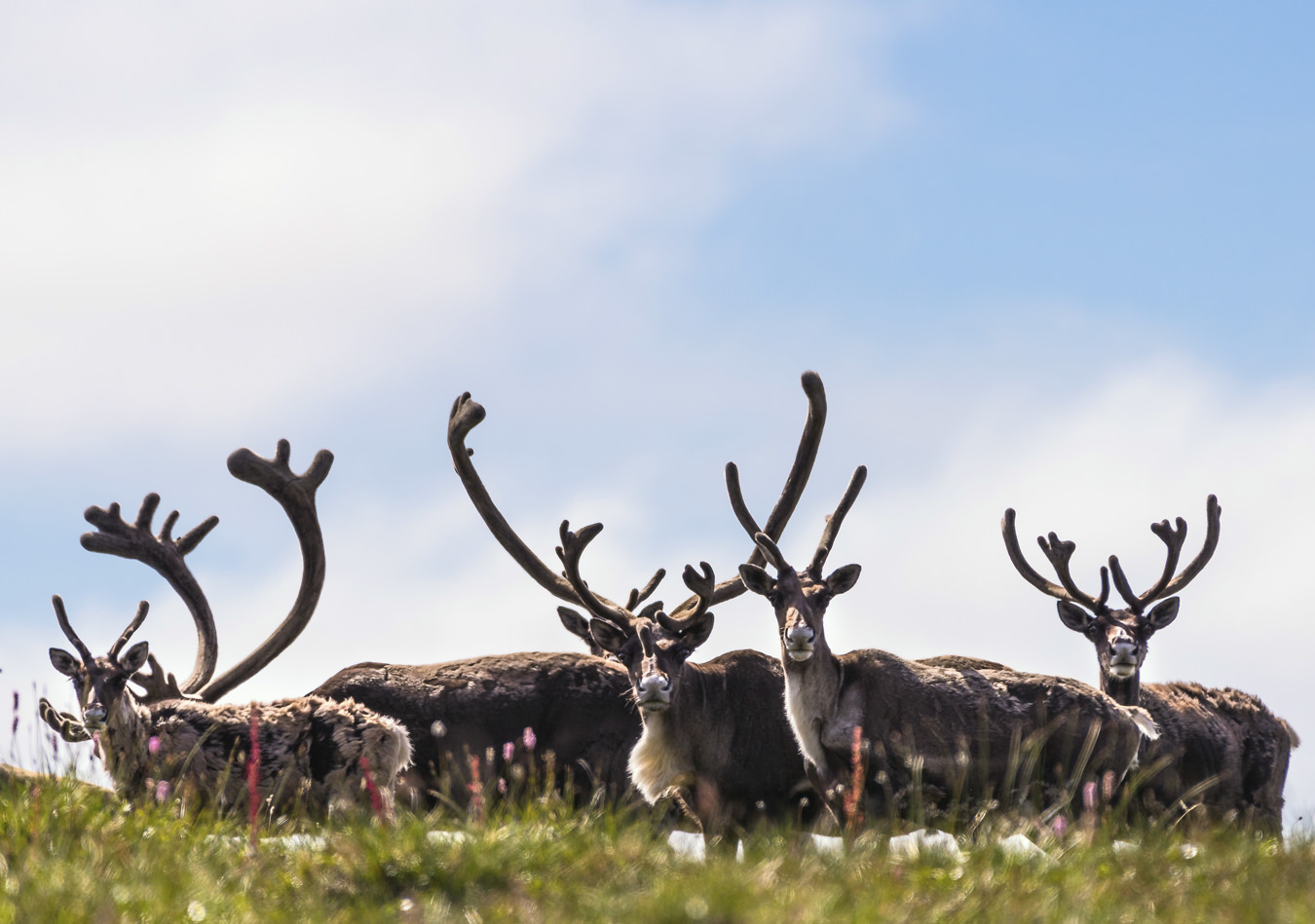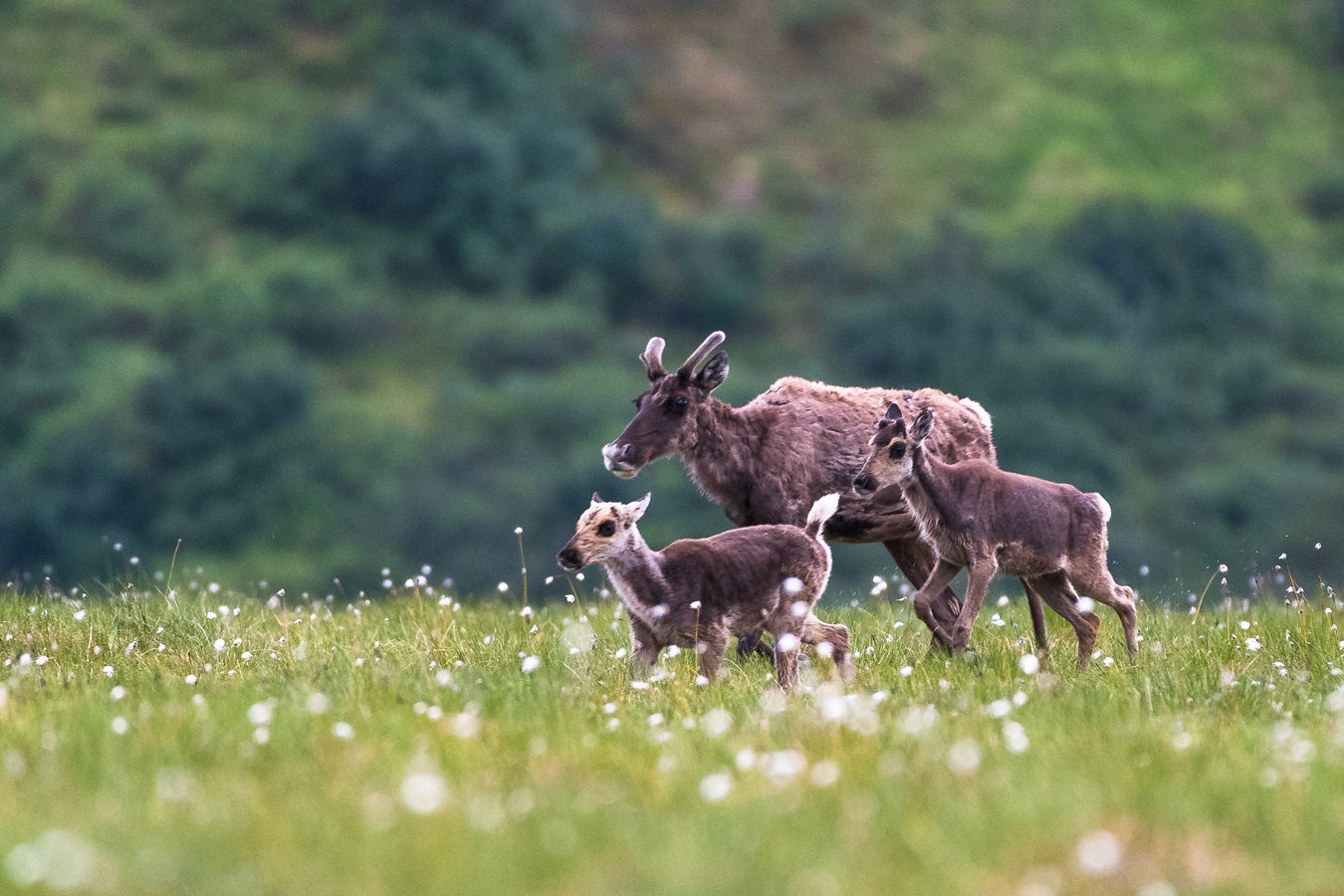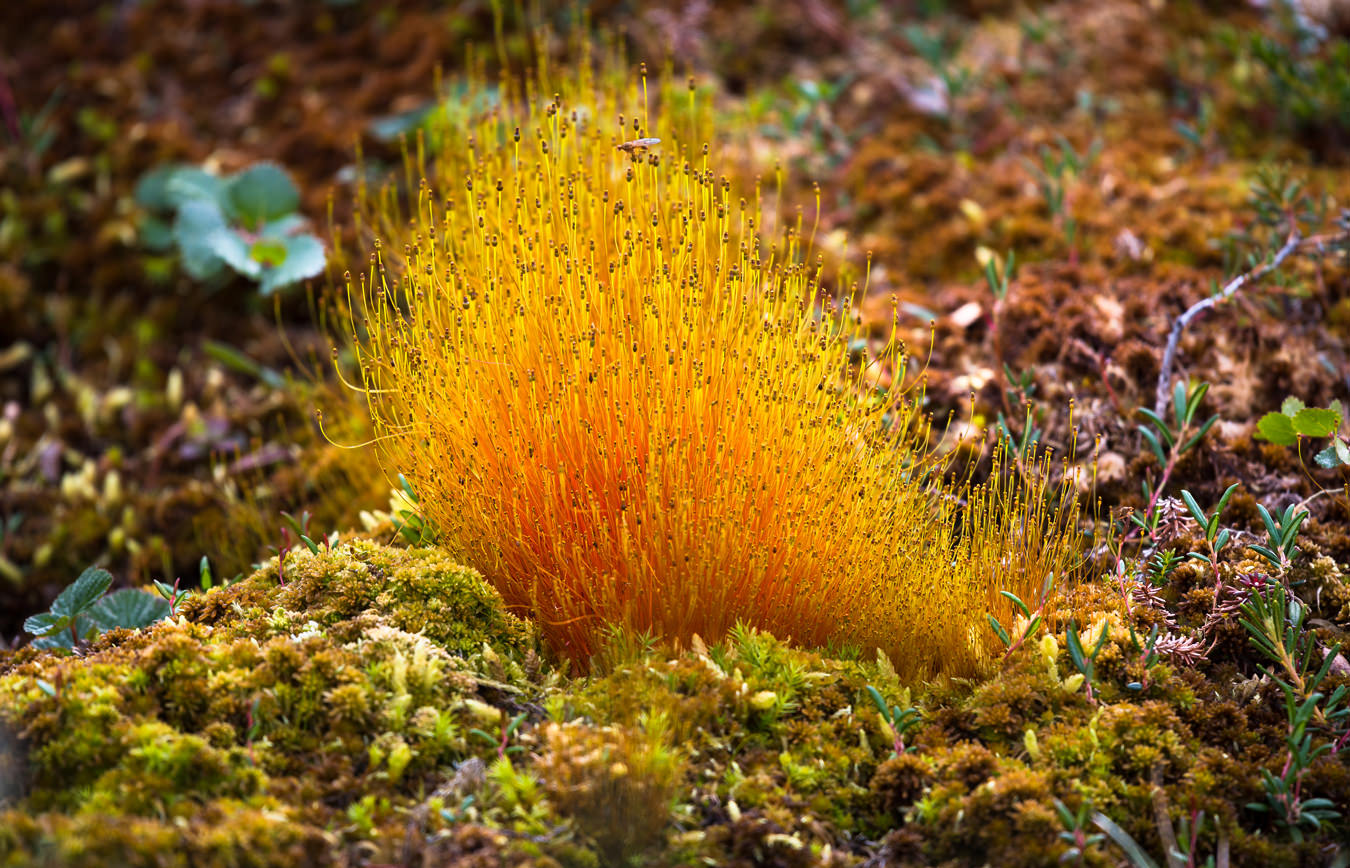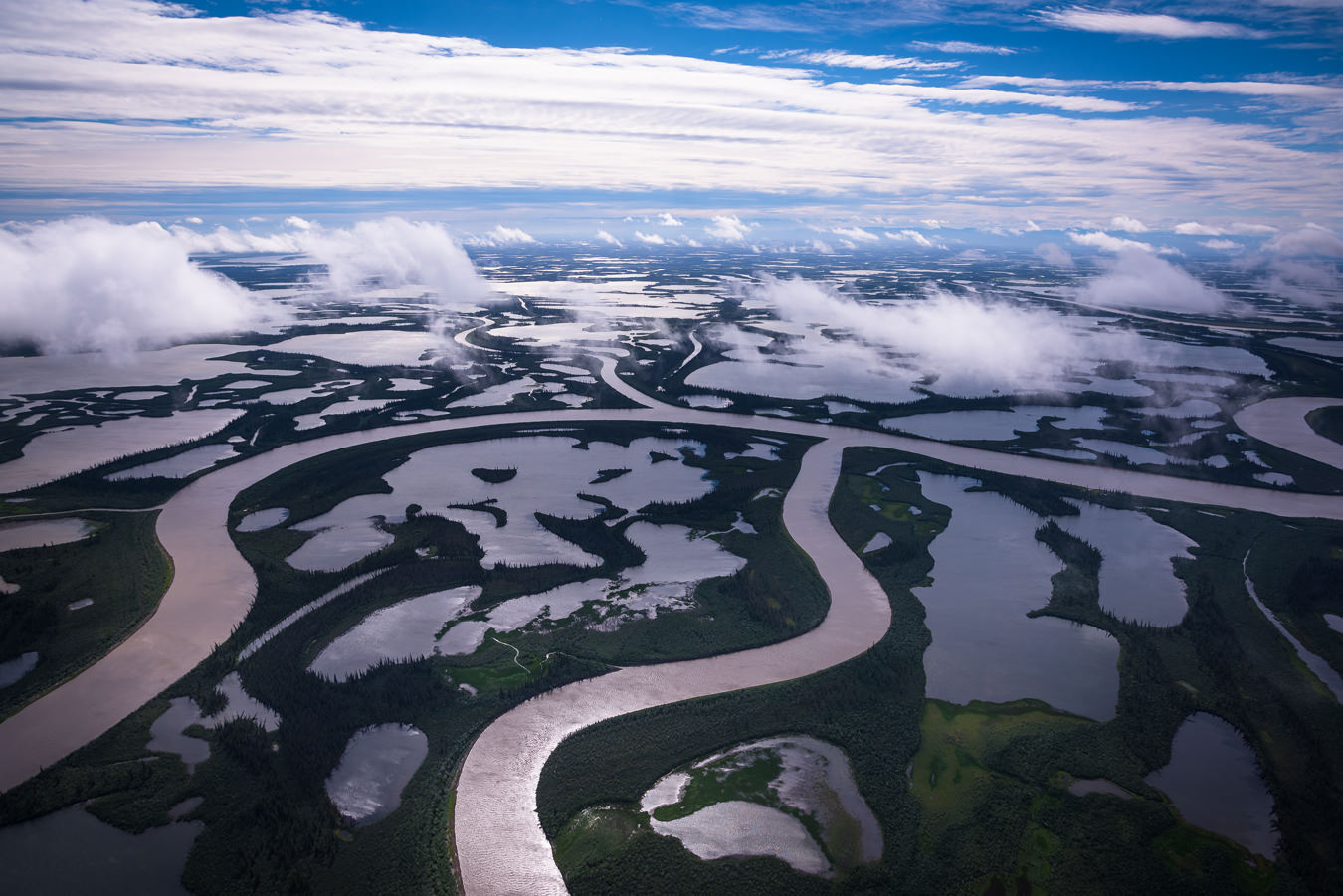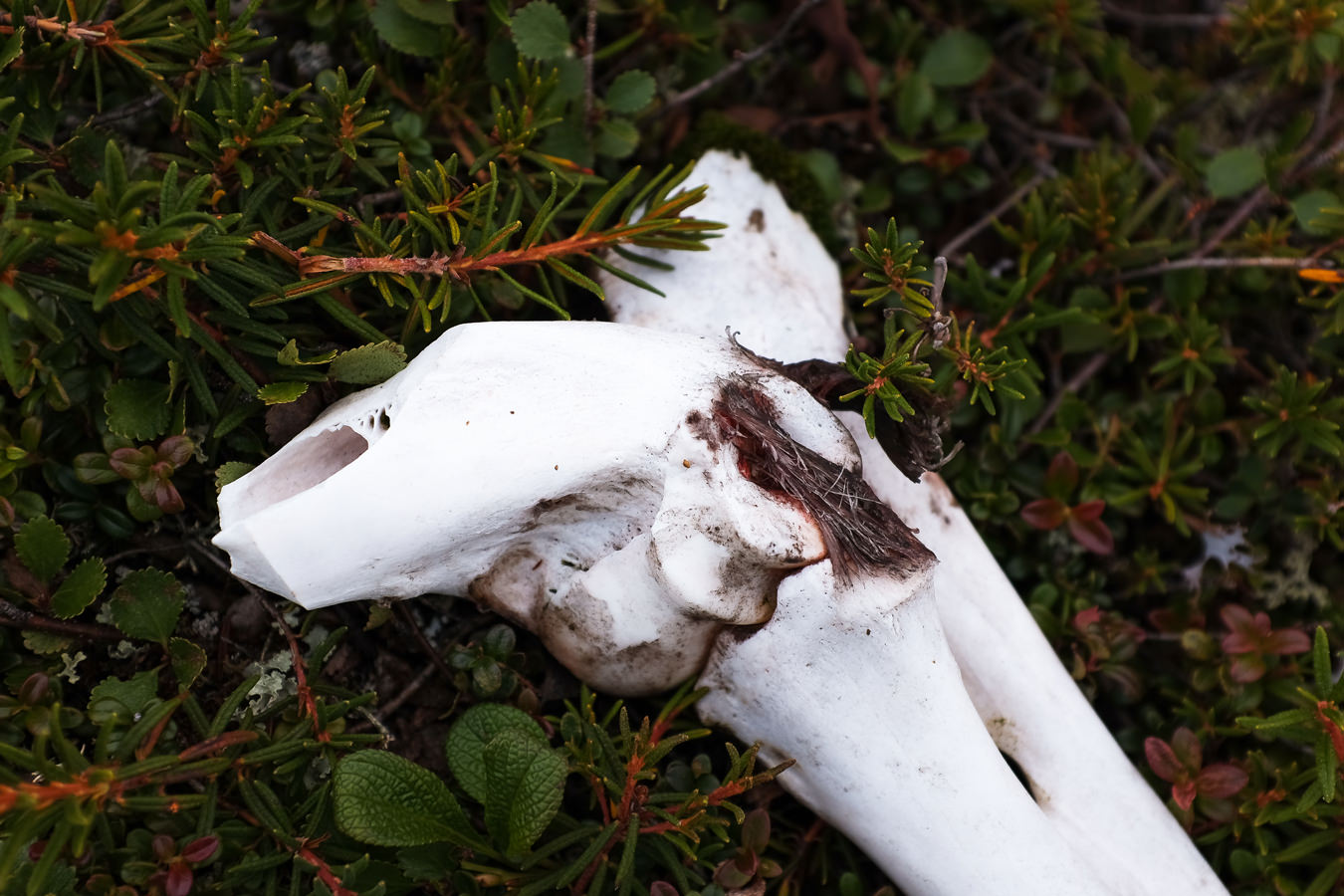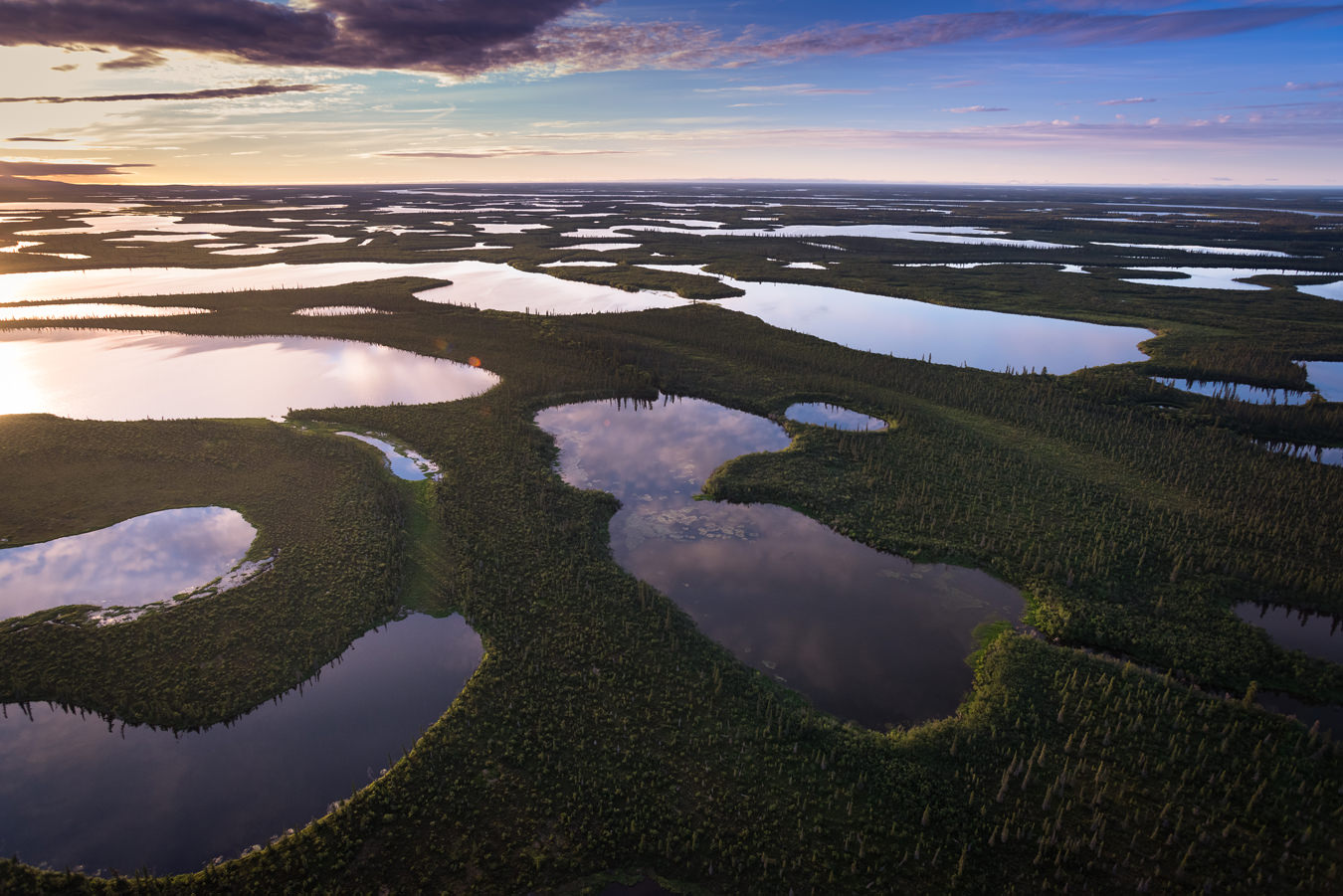North America’s Western Arctic is vast, remote, and, in many ways, untamed by human hands. Spanning across eastern portions of Alaska, through the Northern Yukon, and into the Northwest Territories, the region’s travel mostly moves at a pace dictated impartially by the seasons. First inhabitants of the land and visitors alike must be prepared for weather conditions that can bring snow in July or render internal combustion engines useless, frozen in the midst of a winter cold snap.
Set against this backdrop, the barren-ground Porcupine caribou herd, named after the Porcupine River that bisects its annual range, seems an improbable success. Each year, the herd not only survives in this environment, but undertakes a 1,000-kilometre migration from their winter home in the valleys of the Richardson, Ogilvie, and/or Brooks Range mountains to their calving grounds on the Beaufort Sea.
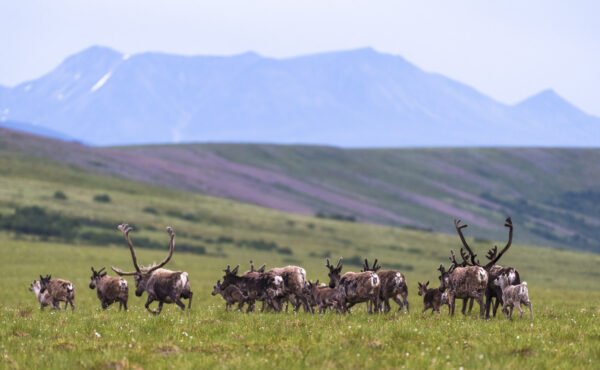
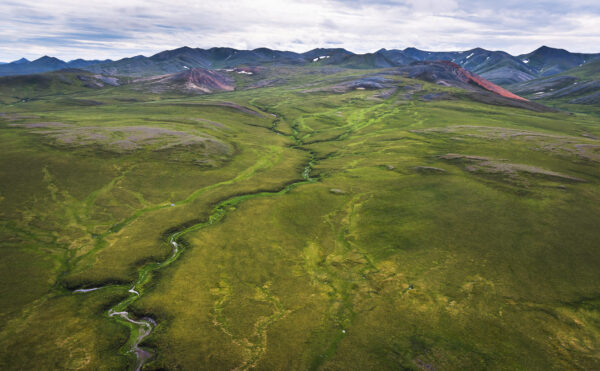
Most calving for the caribou occurs in the first week of June each year, along the lush coastal plains of the Arctic National Wildlife Refuge (ANWR) in Alaska and the Ivvavik National Park in the Yukon. Under constant threat from opportunistic predators, the entire herd mobilizes for their summer migration when vulnerable calves are just four weeks old. Tens of thousands of Porcupine caribou travel closely together as they zig-zag their way through the massive Brooks Range mountains, crossing Ivvavik and Vuntut national parks before arriving at their late summer range, located in the Richardson Mountains. Early on, most of the herd’s mature bulls separate and form their own group, while cows march onward to seek out the nutrients they and their rapidly growing calves require.
Instinctively following trails carved out over thousands of years, the caribou deftly climb shale cliffs, caravan through deep snow, ford arctic rivers, and gallop over tussocky marshlands—while constantly adapting to threats that change as much as the landscape. Grizzlies are the calves’ top predators, as well as stalking golden eagles, wolverines, and wolves. On warm, still days during the summer migration, even mosquitoes can become micro-predators as they drain blood and drive the caribou to distraction and injury. Despite approximately only one-half of calves typically surviving to see the following March, the Porcupine herd is currently estimated at 197,000—near the highest numbers seen since scientists began formal tracking in the early 1970s.
“2001 was our lowest count, where we dropped down to about 123,000. So we’ve had about 15 years of growth now,” says Yukon government regional biologist Mike Suitor, who focuses on the North Yukon region and is actively involved in gathering scientific data on the Porcupine herd. Suitor adds that “this herd doesn’t seem to grow as quickly as a lot of other herds, but they also don’t decline as severely. Compared to other caribou herds in the Northwest Territories, the Porcupine herd actually benefits from being spread out over several ecozones, with good variability in habitat type in the mountainous zones. Because of that, the herd has a lot of resilience, and they’re better able to withstand changes relative to some other barren-ground caribou herds that don’t have this variability in their range.”
Instinctively following trails carved out over thousands of years, the caribou deftly climb shale cliffs, caravan through deep snow, ford arctic rivers, and gallop over tussocky marshlands.
In their own pursuit of life and survival, the herd plays a crucial ecosystem role across a massive geographic region. With their sheer numbers and the size of their annual range, they become one of the biggest modifying forces on the landscape they inhabit. Their path affects the diversity and abundance of plant life on the arctic tundra, while they become a primary food source for so many other species. For millennia, the Porcupine herd has played an integral part in the culture of Gwich’in and Inuvialuit people living in the region, as well as the Northern Tutchone and Hän nations. Suitor explains that “when the caribou walk, they’re on trails and grouped up together, which creates changes on the landscape. Their grazing, trampling effects, and role as a food source mean they determine what happens biologically across that entire landscape.”
Despite being so adaptable and well suited to their ever-shifting surroundings, a rapidly-warming Arctic raises several question marks for the Porcupine herd. “We certainly are seeing major habitat change out there,” Suitor says. “We’re seeing shrub encroachment, which increases food productivity on the North Slope. As long as the right plants are available, it should be better for caribou, but it can also bring increased insect harassment.” In the Richardson Mountains, Suitor and other biologists are now seeing dramatic increases in moose populations—which may be good news, but in turn draws in predators like wolves that can become a problem for the caribou as well.
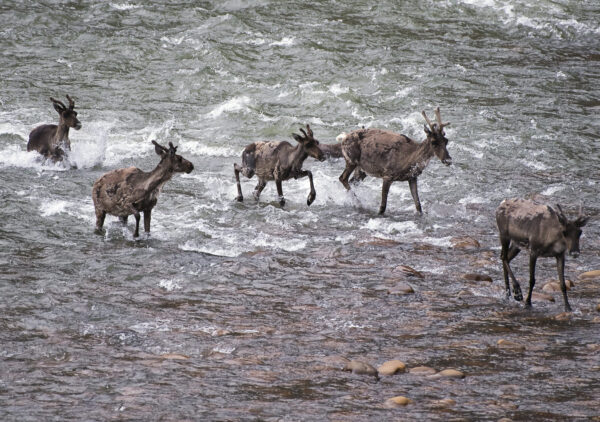
While the Porcupine herd’s range is remote, it is not without human interaction. One of the major infrastructure projects in the Yukon was the development of the Dempster Highway in the late 1970s. This seems to have severed a portion of the herd’s historic winter range in the Peel Watershed. Suitor explains that “while the road itself does not pose a direct threat to the caribou, it does facilitate access to the herd for hunters. We certainly see the effect of hunting off the road and how that can affect the herd’s movements.” Raising awareness about the best practices is therefore seen as essential to ensure the success of the herd, and this work is carried out collaboratively by the Porcupine Caribou Management Board (PCMB).
The PCMB also identifies and tracks several areas of human impact within the herd’s range. While the political debate over potential oil and gas development near the Porcupine herd’s calving grounds—in the 1002 Area of Alaska’s ANWR—has been on the radar for decades, developments not far from the Dempster Highway in the Yukon are also gaining attention. “There are proposed oil and gas projects up at the Eagle Plains area now. It is probably not going to be their downfall, but there’s very reasonable potential of significant impacts on the herd,” says Suitor. “So, we’re trying to work with the assessment board to ensure that their plans are in line with our knowledge of caribou biology and management.”
In this remote environment that has challenged and slowed large-scale efforts at development to date, the Porcupine caribou stand as a remarkable success story. Even a brief glimpse into their world reveals much about adaptation, survival, and the delicate interplay between all components of an ecosystem.
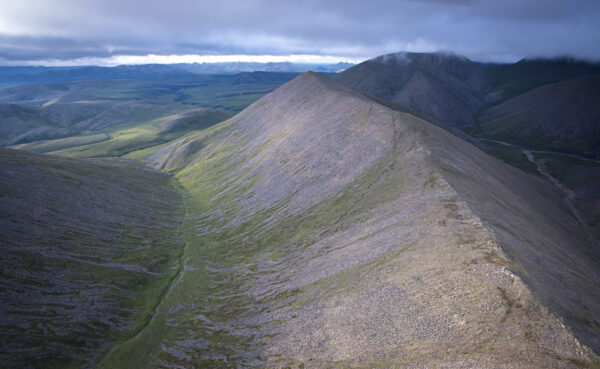
Update: On December 5, 2016 (after this story went to press), the Committee on the Status of Endangered Wildlife in Canada (COSEWIC) added barren-ground caribou, which includes the Porcupine caribou herd, to their list of threatened species. A threatened species, in COSEWIC’s view, is one that is “likely to become an endangered if nothing is done to reverse the factors leading to its extirpation or extinction.”
Purchase our Winter 2016 issue here.

